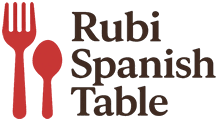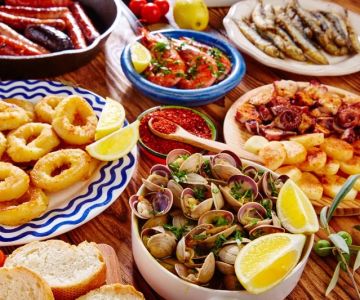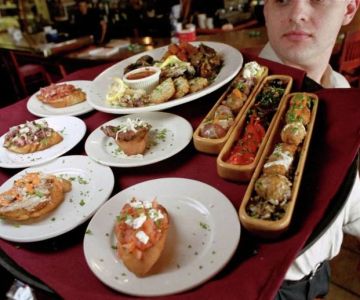
Spanish Breakfasts: What to Eat in the Morning in Spain
- 1. Traditional Spanish Breakfasts
- 2. Regional Breakfast Dishes
- 3. A Modern Twist on Spanish Breakfasts
- 4. Where to Eat Breakfast in Spain
When visiting Spain, breakfast is not just a meal; it’s an experience, often savored with friends and family. While the Spaniards’ approach to breakfast may be simpler than what you might expect, there is an undeniable charm in their selection of fresh, delicious morning foods. In this guide, we explore the typical Spanish breakfast, regional variations, and modern takes on this essential meal, so you can better understand the Spanish breakfast culture and enjoy it to the fullest during your travels or at home.
1. Traditional Spanish Breakfasts
In Spain, breakfast is often a light and quick affair, typically enjoyed in the morning before starting the workday. The most common breakfast items include:
- Tostada con Tomate (Toast with Tomato): This is a staple in many Spanish households. A simple, crunchy toast topped with ripe tomatoes, a drizzle of olive oil, and a sprinkle of salt. It’s a delicious way to start the day, often accompanied by a coffee or fresh juice.
- Churros con Chocolate: While churros are typically a sweet snack or treat, in Spain, they’re often eaten for breakfast, dipped into thick, hot chocolate. This is a favorite breakfast option for both locals and tourists, especially on weekends or during festive times.
- Pastries and Croissants: In many cafes, you will find various pastries, often accompanied by a café con leche (coffee with milk). Spanish croissants, while similar to the French version, might have a slight difference in taste or texture, reflecting the Spanish love for local flavors.
2. Regional Breakfast Dishes
Spain’s diverse regions each bring their own unique flavors and ingredients to breakfast. Here are a few regional dishes to try:
- Pan con Aceite in Andalucía: In southern Spain, particularly in Andalucía, a typical breakfast involves pan con aceite (bread with olive oil). This is paired with a coffee or a glass of fresh orange juice, and sometimes topped with thin slices of cured ham or tomato.
- Ensaimada in Mallorca: In the Balearic Islands, especially in Mallorca, locals indulge in ensaimada, a sweet, spiral-shaped pastry often dusted with powdered sugar. It’s light, fluffy, and a delightful morning snack with a café cortado (coffee with a small amount of milk).
- Horchata in Valencia: A unique breakfast drink from the Valencia region, horchata is a refreshing beverage made from tiger nuts. Often paired with a traditional Spanish pastry, it’s a perfect way to cool down during the hot summer mornings in Valencia.
3. A Modern Twist on Spanish Breakfasts
As with many culinary traditions, modern Spain has also seen a twist on the classic breakfast dishes. While traditional Spanish breakfasts still dominate, younger generations are introducing more innovative flavors and combinations. Here are a few examples:
- Avocado Toast with Iberian Ham: A fusion of the global avocado toast trend and the beloved Spanish jamón. This modern breakfast is a delicious mix of creamy avocado, crispy bread, and savory ham.
- Acai Bowls with Spanish Ingredients: Some health-conscious Spaniards have adopted acai bowls, adding local ingredients like honey, almonds, and figs, creating a vibrant, nutritious start to the day.
- Healthy Smoothies with Mediterranean Fruits: Smoothies are gaining popularity in Spain, made with Mediterranean fruits such as oranges, peaches, and berries. These fresh smoothies are a healthy and energizing way to kick off the day.
4. Where to Eat Breakfast in Spain
If you’re planning a visit to Spain, here are a few top places to enjoy a delicious breakfast:
- Local Cafes: The best way to experience a traditional Spanish breakfast is at one of the many local cafés scattered throughout cities and towns. Order a simple tostada with tomato and a café con leche, and enjoy the lively Spanish atmosphere.
- Hotel Buffets: Many hotels in Spain offer an array of breakfast options, from continental breakfasts to regional specialties. If you’re looking for a more varied experience, hotel buffets often provide a mix of traditional and modern breakfast dishes.
- Markets and Food Halls: Visiting a local market, such as Madrid’s Mercado de San Miguel or Barcelona’s Mercat de Sant Josep de la Boqueria, will allow you to try a wide variety of fresh, local breakfast options, from fresh juices to gourmet pastries.
Whether you’re exploring the streets of Madrid, enjoying the sunny beaches of Valencia, or visiting the mountainous regions of Spain, the Spanish breakfast scene offers a unique blend of tradition, regional diversity, and modern innovations. For more information on Spanish culinary experiences, including breakfast ideas and dining recommendations, visit Rubi Spanish Table for the best products and services to enhance your dining experience.








 Le Fatima4.0 (342 reviews)
Le Fatima4.0 (342 reviews) Kina's Spanish Restaurant4.0 (92 reviews)
Kina's Spanish Restaurant4.0 (92 reviews) Ficelle4.0 (177 reviews)
Ficelle4.0 (177 reviews) Socarrat Paella Bar - Midtown East4.0 (1233 reviews)
Socarrat Paella Bar - Midtown East4.0 (1233 reviews) Sangria 714.0 (1136 reviews)
Sangria 714.0 (1136 reviews) Amada Philadelphia4.0 (2264 reviews)
Amada Philadelphia4.0 (2264 reviews) How to Make Spanish Arroz con Mariscos: Traditional Seafood Paella Recipe
How to Make Spanish Arroz con Mariscos: Traditional Seafood Paella Recipe Best Spanish Restaurants in Charlotte for Mediterranean Cuisine
Best Spanish Restaurants in Charlotte for Mediterranean Cuisine How to Make Spanish Tarta de Coco, Almendra y Limón: Coconut, Almond, and Lemon Cake
How to Make Spanish Tarta de Coco, Almendra y Limón: Coconut, Almond, and Lemon Cake Best Spanish Restaurants in Tampa for Tapas, Paella, and Mediterranean Cuisine
Best Spanish Restaurants in Tampa for Tapas, Paella, and Mediterranean Cuisine Discovering Regional Tapas Recipes Representing Spanish Culinary Diversity
Discovering Regional Tapas Recipes Representing Spanish Culinary Diversity How to Make Spanish Tortas de Aceite at Home
How to Make Spanish Tortas de Aceite at Home